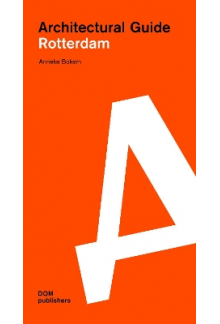- Titulinis
- Meno ir laisvalaikio literatūra
- Meno ir laisvalaikio literatūros išpardavimas
- Rotterdam: Architectural Guide
Anneke Bokern
Rotterdam: Architectural Guide
Balsavo 0
ISBN: 9783869226002
Autorius : Anneke Bokern
Leidimo metai: 2021
Leidėjas: DOM publishers
Puslapių skaičius: 288
Leidinio kalba: Anglų
Formatas: Minkšti viršeliai
Autorius : Anneke Bokern
Leidimo metai: 2021
Leidėjas: DOM publishers
Puslapių skaičius: 288
Leidinio kalba: Anglų
Formatas: Minkšti viršeliai
Pilna kaina:
42.00 €
- % perkant internetu
Kaina:
Šių parametrų produkto neturime
Likutis pakankamas
Pristatymas Lietuvoje per 3-5 savaitės. Galimas vėlavimas
Turime sandėlyje. Pristatymas Lietuvoje 1-4 d.d.
Pristatymas Lietuvoje per 3-5 savaitės. Galimas vėlavimas
Pristatymo sąlygos
Aprašymas
Whatever Rotterdam may be, it is not a cliché image of Holland. Maybe that is exactly the reason why characterizations of the city usually cannot do without a comparison with arch-rival Amsterdam. In contrast to its picture-perfect big sister, war-traumatized Rotterdam is full of urban ruptures: buildings come and go like in no other Dutch city. The transitory nature of architecture might also be related to its identity as a harbour city. Other cities have a harbour, but in Rotterdam the harbour has a city, goes a local saying. The book Rotterdam. Architectural Guide presents 150 buildings, arranged by neighbourhood. On this foray through the city, the reader is introduced to its history from the Dutch Golden Age in the 17th century to the massive expansion of the harbour in the 19th century, from the beautiful merchants city to industrial Rotterdam , even if the focus is clearly on the 20th century and on the latest developments. For although the social problems are great, the city has recently become much more attractive. Around 2014 four iconic buildings were opened: high-rise De Rotterdam, the new Central Station, Markthal, and Timmerhuis. They kicked off a brand-new hype. At the other end of the spectrum lies a range of bottom-up, low-budget projects. Rotterdam offered ample space for such initiatives, with its openness for experiments and and the idea of the city as a prototype that continues to spread there. In combination with the upgrading of the city centre and the gentrification of former harbour areas, all this led to Rotterdam suddenly being called the Dutch Brooklyn, praising its off-beat charm in comparison to overcrowded, mainstream Amsterdam. The book Rotterdam. Architectural Guide shows where this charm comes from and where you can find it.
Atsiliepimai (0)
Palikite atsiliepimą

